$0.00
No products in the cart.
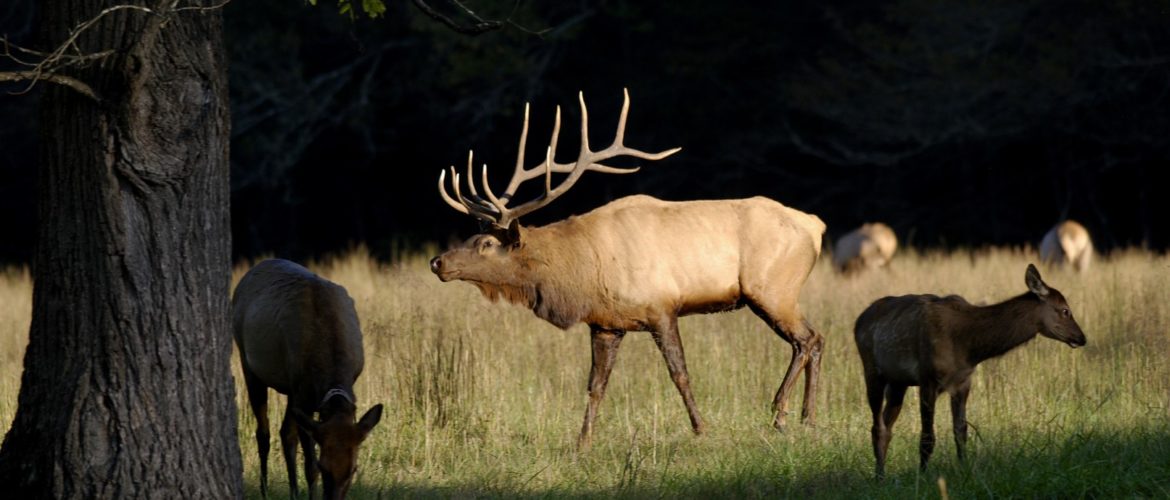
The name Wapiti is derived from the Shawnee and Cree word waapiti, meaning “white rump”. The Wapiti or Elk (Cervus Canadensis) is one of North Americas largest native deer species as well as holding a similar title across Central and Northeast Asia. Elk have played an important role in the history of a many of peoples throughout time. Petroglyphs from Asia depict antler-less female elk which were frequently overlaid with boats and associated with rivers, suggesting they also represented paths to the underworld. Petroglyphs of Elk were carved into cliffs by the Anasazi, hundreds of years ago. The Lakota held the elk in particular importance as the male was admired for its ability to attract mates, Lakota men would play a courting flute imitating a bugling elk to attract women. Men used elks’ antlers as love charms and wore clothes decorated with elk images. The Elk attracts a large following of nature lovers and hunters alike with an eerie “Bugle” and imposing stature, they are the quintessential representation of true Wilderness.
Members of the genus Cervus (Deer) first appeared in the fossil record around 25 million years ago, during the Oligocene in Eurasia, but did not appear in the North American fossil record until the early Miocene era. The now extinct Irish Elk (Megaloceros) was not a member of the genus Cervus, but rather the largest member of the wider deer family (Cervidae). Although having “Elk” within their name, the Irish Elk is more related to the Fallow deer than the North American Elk or Moose, despite their imposing size. Early European explorers in North America, who were familiar with the smaller Red deer of the British Isles, thought that the larger North American animal resembled a Moose, and consequently gave it the name Elk, which since antiquity had referred to the Moose(Alces alces) in Europe.
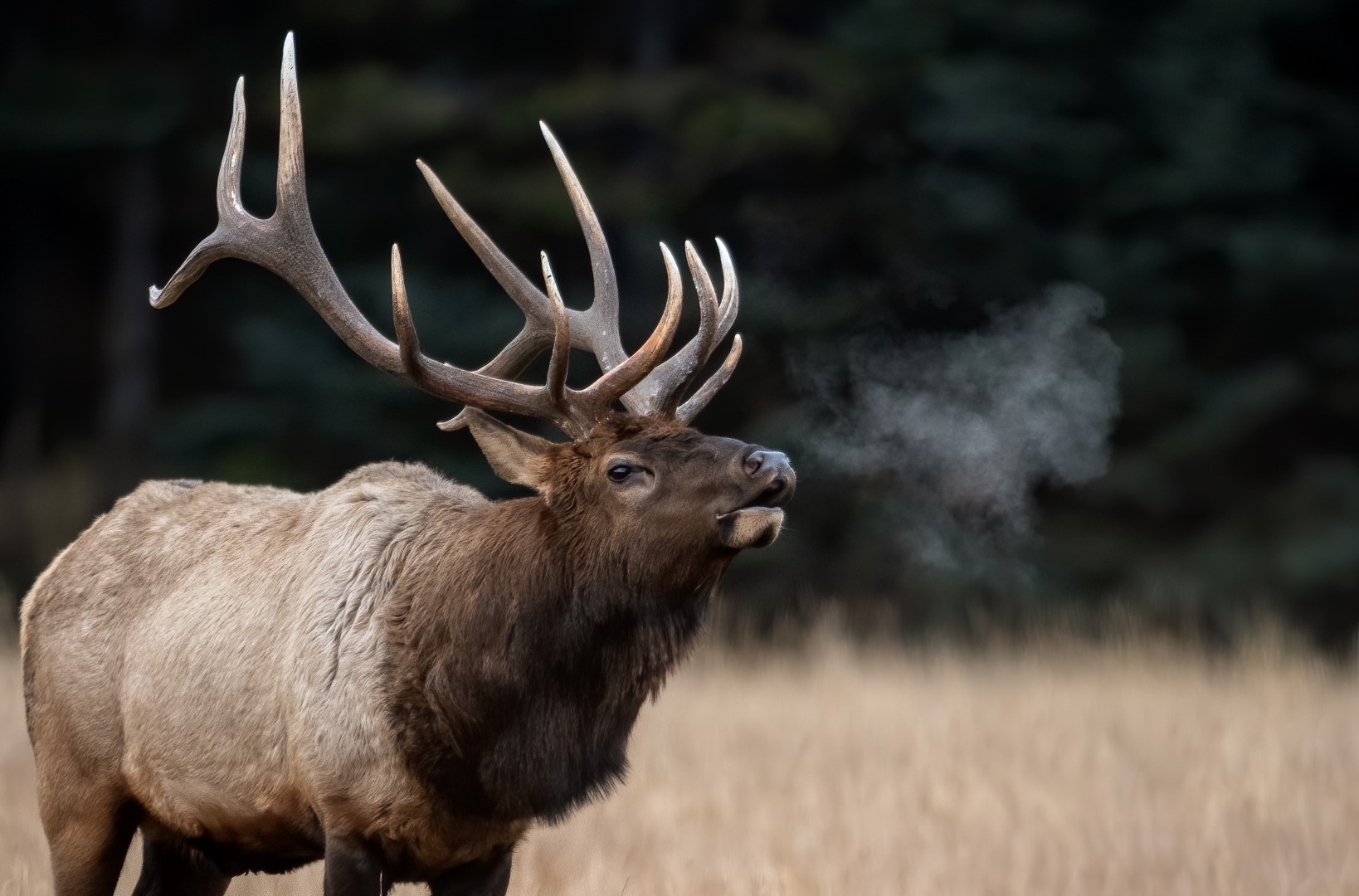
Until recently, Red deer and Elk were considered to be one species, Cervus elaphus (Grubb, P. (2005). “Order Artiodactyla”. In Wilson, D.E.; Reeder, D.M (eds.). Mammal Species of the World: A Taxonomic and Geographic Reference).
However, MtDNA studies, conducted on hundreds of samples in 2004 from Red deer and Elk subspecies as well as other species of the Cervus deer family, strongly indicate that Elk, or Wapiti, should be a distinct species, namely Cervus Canadensis (Ludt, Christian J.; Schroeder, Wolf; Rottmann, Oswald; Kuehn, Ralph (2004). “Mitochondrial DNA phylogeography of red deer (Cervus elaphus)
The previous classification had over a dozen subspecies under the C. elaphus species designation; DNA evidence concludes that Elk are more closely related to Thorold’s deer and even Sika deer than they are to the Red deer. Although, Elk and Red deer produce fertile offspring in captivity, and the two species have freely cross-bred in New Zealand’s Fiordland National Park, where the cross-bred animals have all but removed the pure Elk blood from the area. Numerous key morphological differences distinguish C. canadensis from C. elaphus such as the former’s wider rump patch and paler-hued antlers.
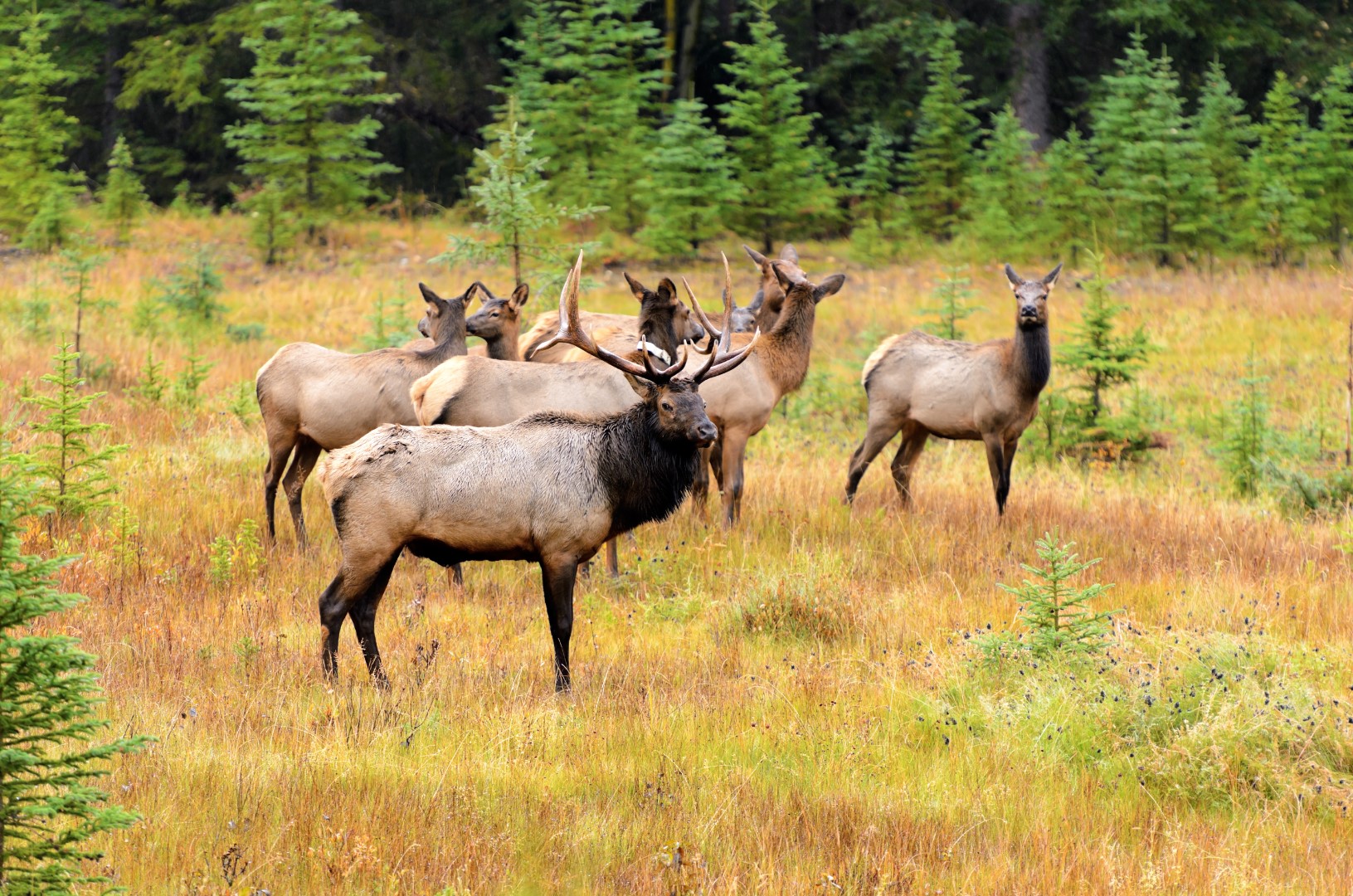
There are numerous subspecies of Elk, with six from North America and four from Asia, although some taxonomists consider them different ecotypes of the same species (adapted to local environments through minor changes in appearance/behaviour). Populations vary in antler shape and size, body size, coloration and mating behaviour. MtDNA investigations of the Eurasian subspecies revealed that phenotypic variation in antlers, mane and rump patch development are based on “climatic-related lifestyle factors”.
Focusing on Cervus Canadensis, the six subspecies are comprised of:
• Rocky Mountain elk (C. c. nelsoni)
• Roosevelt’s elk (C. c. roosevelti)
• Tule elk (C. c. nannodes)
• Manitoban elk (C. c. manitobensis)
• Eastern elk (C. c. canadensis; extinct)
• Merriam’s elk (C. c. merriami; extinct)
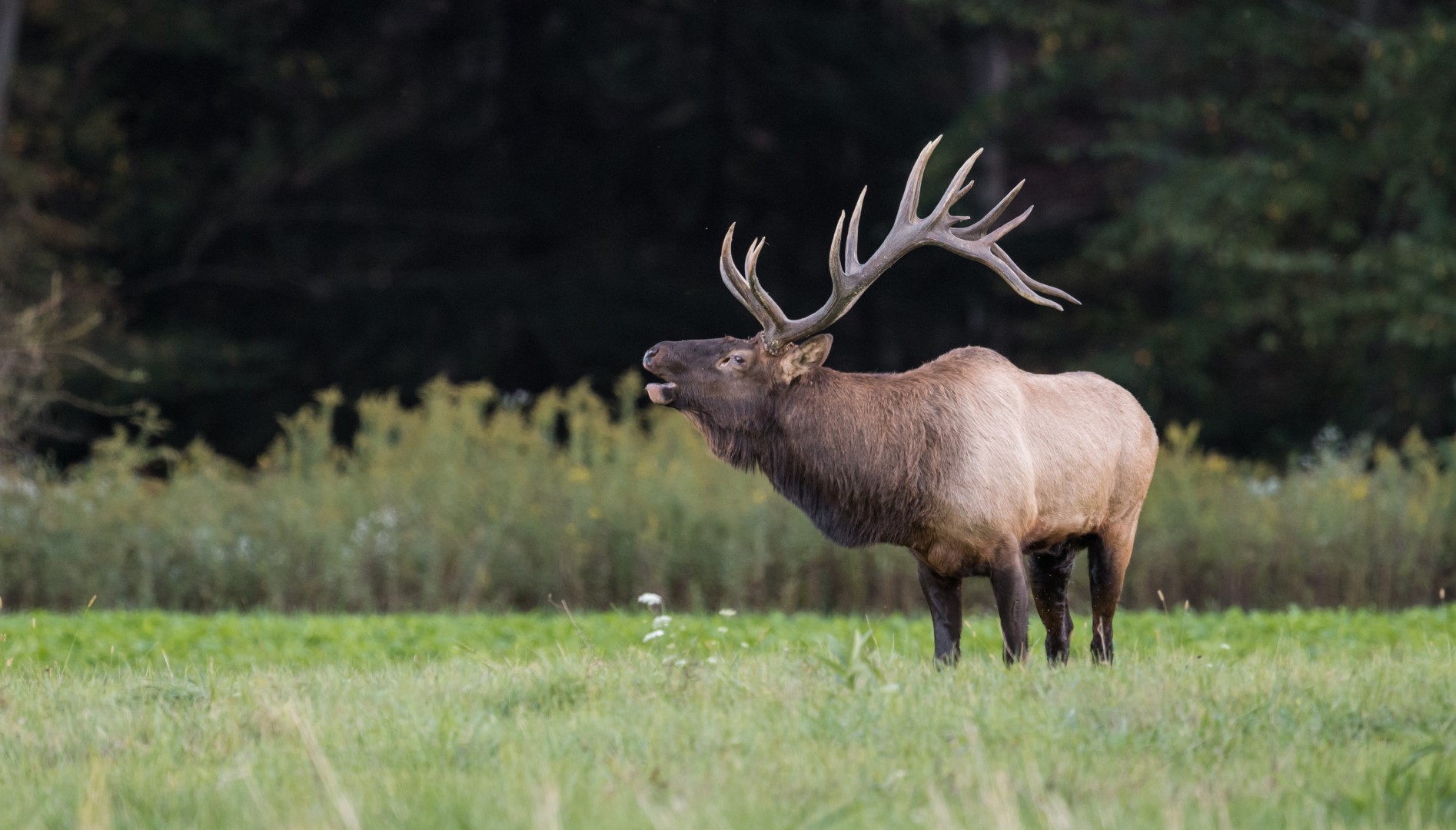
Elk in general have thick bodies with slender legs and short tails. Their size across the subspecies vary greatly and dimorphism between male and females is evident. The Elk have an average shoulder height of 0.75–1.5meters with a nose-to-tail length of 1.6–2.7 meters. Males are larger and weigh 178–497 kilograms while females weigh 171–292 kilograms. The largest of the subspecies is the Roosevelt Elk (C. c. roosevelti), found west of the Cascade Range in the U.S. states of California, Oregon and Washington, and in the Canadian province of British Columbia. Roosevelt Elk have been reintroduced into Alaska, where the largest males are estimated to weigh anywhere up to 600 kilograms. Typically, male Roosevelt Elk weigh around 318 to 499 kilograms, while females weigh 261 to 283 kilograms. Male Tule Elk weigh 204–318 kg while females weigh 170–191 kilograms. The male of the species is referred to as a “Bull” and the female a “Cow”.. The antlers are made of bone, which can grow at a rate of 2.5 centimetres per day. While actively growing, a soft layer of highly vascularized skin known as velvet typically covers them, this is removed in the summer when the antlers have fully developed. Bull Elk typically have six tines on each antler and the Siberian and North American Elk carry the largest antlers of the overall Elk species. The formation and retention of antlers is apparently testosterone-driven where, in late winter and early spring, the testosterone level drops, which causes the antlers to shed. A thirteen year study conducted in the Yellowstone found that wolves preferred to attack the Elk after they had dropped their antlers, the tines and thick neck muscles present a formidable means of defence. The study also found that the males did not drop their antlers at the same time, the earlier a male dropped his antlers, the more time his new set would have to grow, allowing them to potentially grow bigger than other competing males. Dropping antlers earlier had a major drawback, it made those individual members stick out among their peers for wolves. It also put other males around them at greater risk. The researchers found that if a group of males had just one antlerless member, it was 10 times more likely to be attacked by wolves (Matthew C. Metz et al. Predation shapes the evolutionary traits of Cervid weapons, Nature Ecology & Evolution (2018)).
The name Wapiti defined from the Shawnee word meaning “white rump” which refers to the significant rump patch that covers high above the hip of a true Elk, was adopted in the early 19th century in an attempt to use a common word for the animals. This white patch is evident throughout the seasonal changes that influence the pelage of the Elk. During the Fall, Elk grow a thicker coat of hair, which helps to insulate them during the winter. Both male and female North American Elk grow thin neck manes however by early summer, the heavy winter coat has been shed. The Elk have different coloration based on the seasons and even the types of habitats, with grey or lighter coloration prevalent in the winter and a more reddish, darker coat in the summer. Subspecies living in arid climates tend to have lighter coats than do those living in forests (Pisarowicz, Jim. “American Elk – Cervus elephus”). Most have lighter yellow-brown to orange-brown coats in contrast to dark brown hair on the head, neck, and legs during the summer. Calves are born spotted, as is common with many deer species, and generally lose them by the end of their first summer.
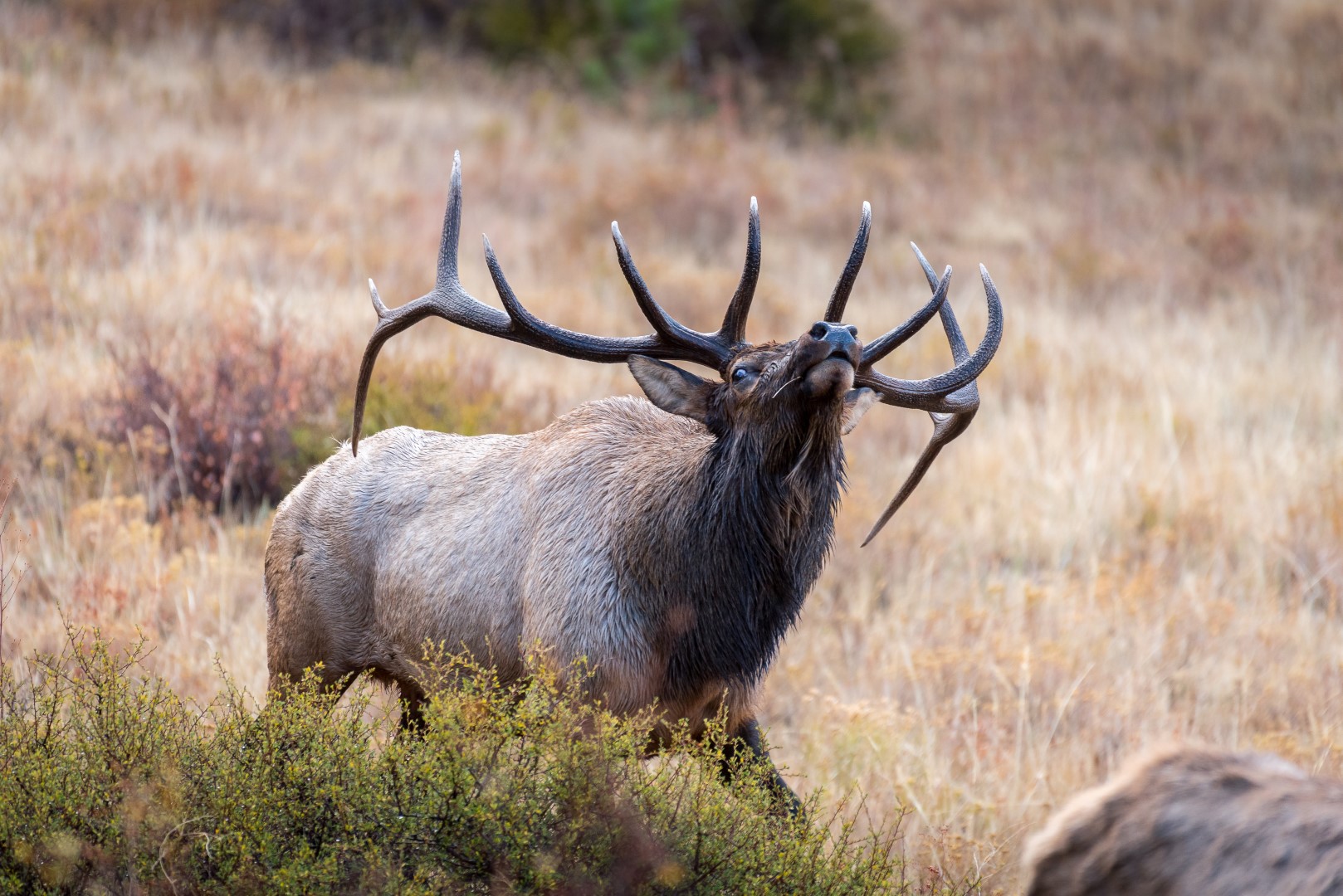
Predators of Elk include wolves, coyotes, brown and black bears, cougars, and Siberian tigers(where present). Coyote packs mostly prey on Elk calves, though they can sometimes take a winter- or disease-weakened adult. In the Greater Yellowstone Ecosystem, which includes Yellowstone National Park, bears are the most significant predators of calves. Modern subspecies are descendants from Elk that once inhabited Beringia, a region between Asia and North America that connected the two continents during the Pleistocene. Beringia provided a migratory route for numerous mammal species, including brown bear, camel, horse, caribou, and moose, as well as humans (Flannery, Tim (10 May 2001). The Eternal Frontier: An Ecological History of North America and Its Peoples). As the Pleistocene came to an end, ocean levels began to rise; Elk migrated into Asia and North America. In North America they adapted to almost all ecosystems except for ecosystem dominated by tundra, desert country, and the gulf coast.
In North America, the Rocky Mountain Elk(C. c. nelsoni) subspecies has been reintroduced by hunter-conservation organizations in the Appalachian region of the eastern U.S., where the now extinct eastern Elk once lived(Cochran, Bill (27 June 2004).
Since the late 1990s, Elk have been reintroduced and recolonized in the states of Kentucky, North Carolina and Tennessee, Virginia and West Virginia(Returning Elk to the Southeast: A 20-year Retrospective) Elk have also been reintroduced in a number of other states, including Pennsylvania, Michigan, Wisconsin, Missouri and Etolin and Afognak Islands in Alaska. Reintroduction of the Elk into Ontario began in the early 20th century and is ongoing with limited success. As of 1989, population figures for the Rocky Mountain subspecies were 782,500, and estimated numbers for all North American subspecies exceeded one million. Prior to the European colonization of North America, there were an estimated 10 million Elk on the continent (“Rocky Mountain Elk”. U.S. Fish & Wildlife Service). Outside their native habitat, Elk and other deer species, especially White-tailed deer, were introduced in areas that previously had few, if any, large ungulates. Typically brought to these countries for hunting, meat, hides and or antler velvet, they have proven highly adaptable.
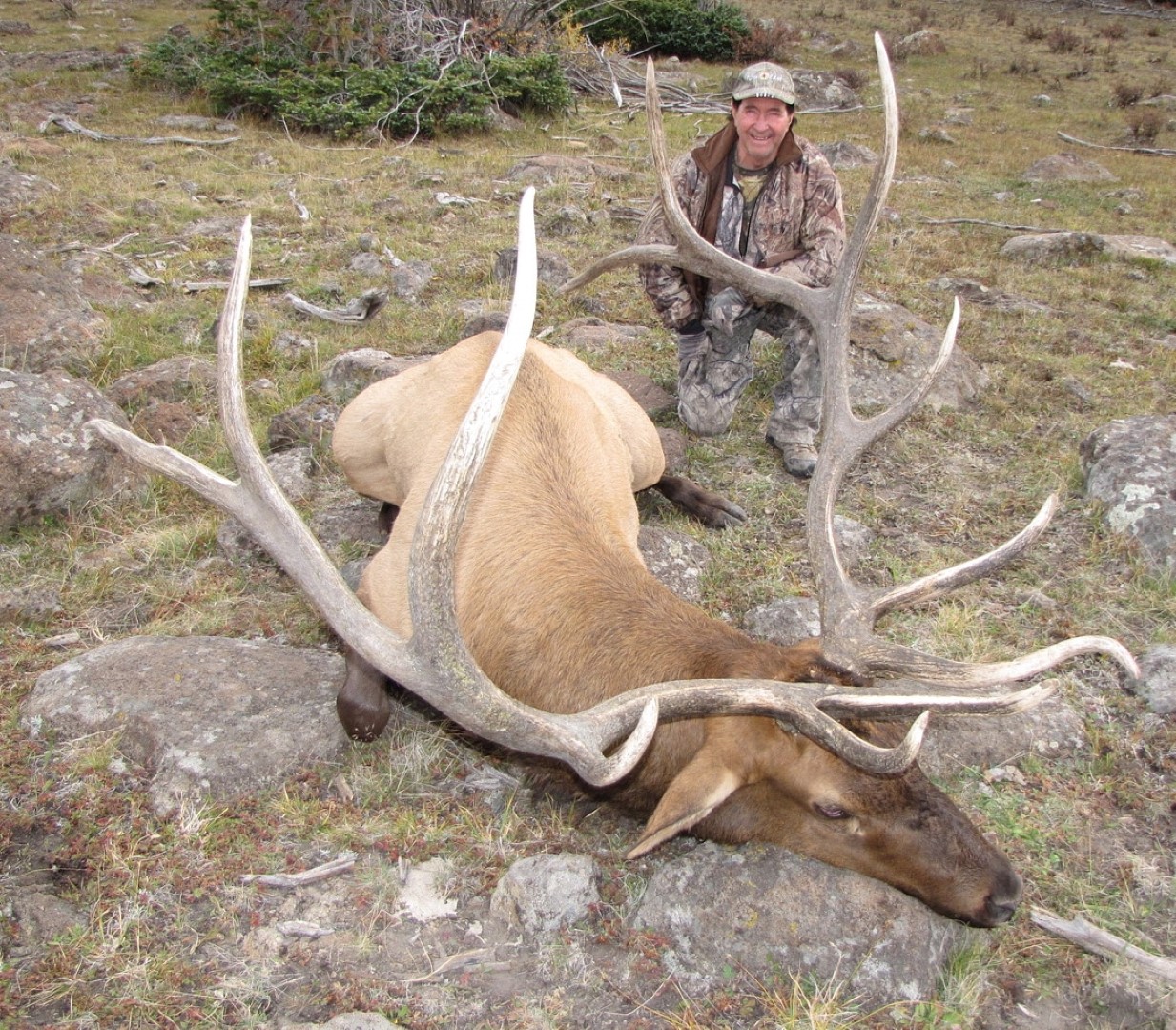
The introduction of Wapiti into New Zealand began in the 1870s with a failed release on Kawau Island. A further two Wapiti were shipped to Dunedin between 1980-1985; Unfortunately, the Bull did not survive the rough sea passage and the cow died shortly after giving birth to a calf that escaped and was shot some years later carrying a non-typical set of antlers which eventually ended up in the hands of famous hunter Leslie Murrell. Finally, a successful introduction of Rocky Mountain Elk(C. c. nelsoni) into Fiordland National park was conducted, with 18 animals being arranged by T. E Donne and accompanied in their voyage by F. Moorehouse.
The surviving 18 animals were released into the George Sound area on the 3rd of March, 1905. The area of which was then a National Reserve, declared by future Prime Minister, Thomas Mackenize in 1904, only one year before the release of the animals taking place. The release, and proximity to the significant Red deer range provided an opportunity for “hybridization” of the Elk with the more numerous Red deer which has now resulted in doubts that pure Elk exist in the wild in New Zealand. Since the strong suggestion that Elk belong to the Cervus Canadensis species, the term hybridisation is used here rather than the suggested “Crossbreeding” suggested by D. Bruce Banwell in “The Wapiti” (Volume 2) which was printed in 2001, prior to the 2004 “Mitochondrial DNA phylogeography of Red deer (Cervus elaphus)” study suggesting the classification. A selective sampling of 156 animals from the Wapiti area in Fiordland conducted by Landcare Research in 2015/16 returned genotype DNA results ranging from 71% Elk to as low as 5% suggesting a strong remaining presence of Red deer influence.
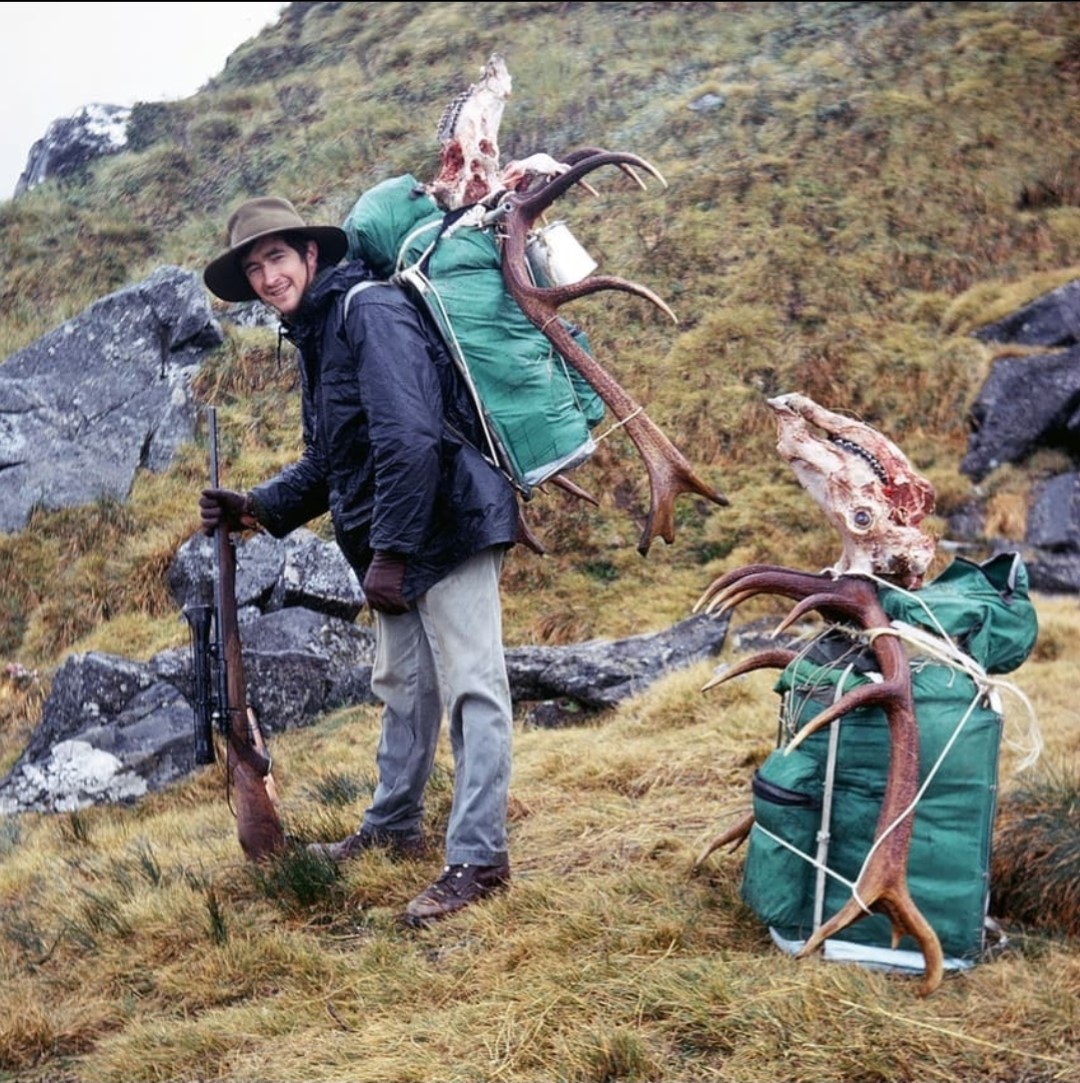
Efforts to “cull” the Red deer trait out of the Fiordland herd have had varied success over time. The Elk, more commonly referred to as Wapiti in New Zealand have had a troubled past. Having first gained great interest from the Government, so much so that F. Moorhouse was called on again, after first accompanying the original animals from the U.S, he was then sent to survey game populations (Including Moose) in the release area. In attendance was L. Hinge representing the Southland Acclimation Society. The pair reported that the Wapiti appeared to be established and several animals were seen. Interest was such that the Southland Acclimation Society sent C.J Evans to investigate the distribution of animals into the eastern side of the range some months later.
With accurate information on hand, the Acclimation Society was able to successfully lobby Prime Minister W. F. Massey to conduct a limited season on the Wapiti by way of issuing two licences at £10 each. In 1923, the first licenced trophy was taken on the shore of Lake Katherine by Vivian Donald and legendary hunter Leslie Murrell.
“He proved to be a fine well grown bull with 14 points, length 53 inches, spread 49” – Vivian Donald
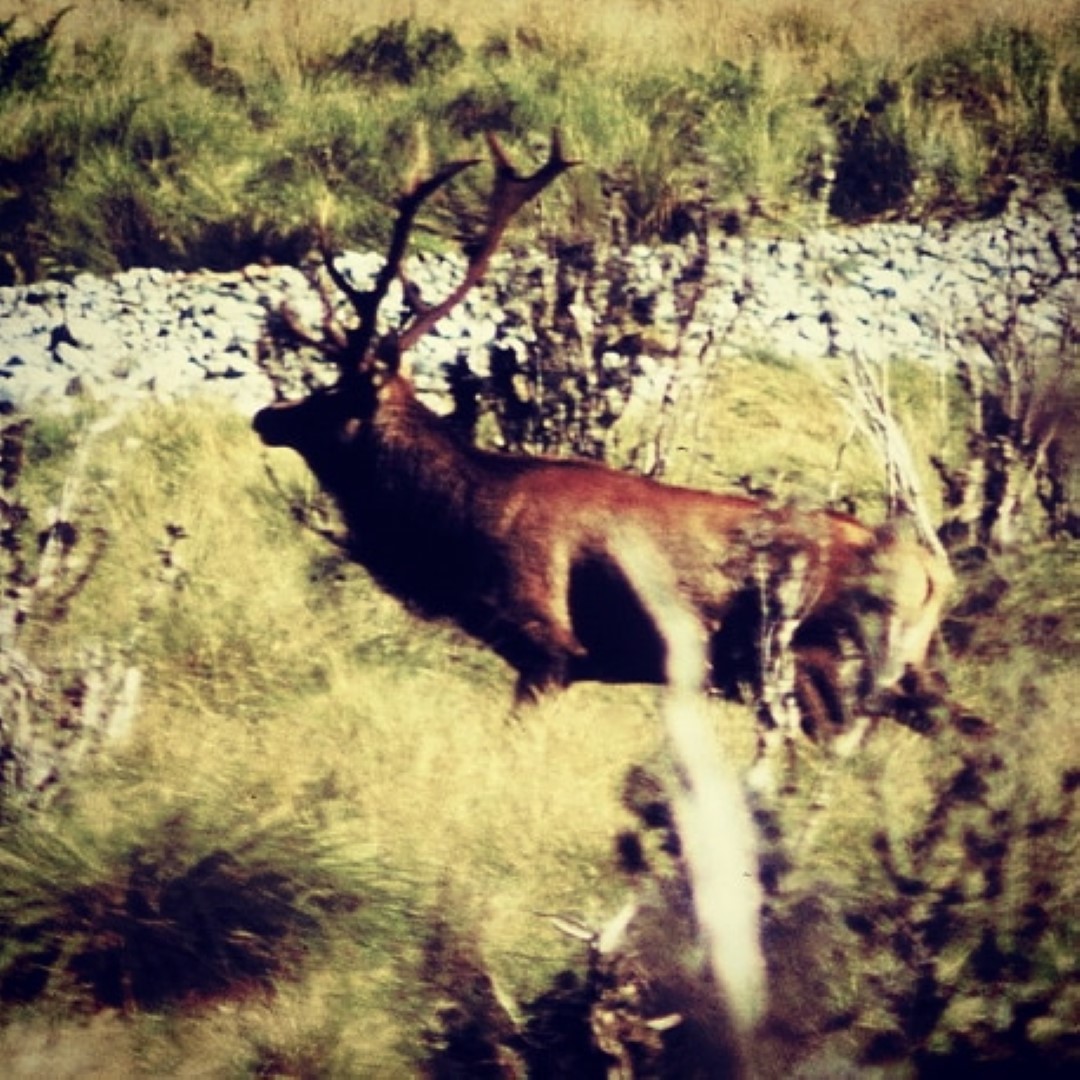
Future years saw the herd prosper and attract famous sportsmen from far and wide to hunt animals which, in some cases, exceeded trophy potential of their northern counterparts with bulls of Fiordland exceeding 400 Douglas Score. Interestingly, Banwell suggests that some of these heads measured years later had shrunk several inches.
The “good old days” didn’t last long for the Wapiti with removal of all protection of the herd in 1934 because of concerns around increasing animal numbers. With the onset of World War II, the deer faced little pressure other than that of the skin hunters harvesting for a demanding market, the Wapiti yielding a far larger skin than that of the Red deer, per animal.
In 1938 the herd took a substantial loss of a hundred animals to Government cullers. Then, a decade after that further control of the Wapiti was done when Takahe, which was thought to be extinct, was found in the Murchison Mountains. By this stage the animals had started to hybridize and the Wapiti took a further setback when the 1952 National Parks Act became Law calling for all introduced flora and fauna to be destroyed or exterminated. As venison attracted high prices from European markets enterprising hunters took to the air in the mid 70’s and the ensuing “Deer Wars” entailed a battle of helicopter meat harvesters for the export market and ground sporting hunters which spanned decades. In 1981 the government made an effort to change how the impact of deer in the park was managed and agreed to relocate an improved Wapiti herd to somewhere less contentious than Fiordland while significantly reducing red deer numbers. The move was intended to pacify both hunters and conservationists. By this time, the influence of Red deer on the Wapiti herd had become a problem for those who still wanted purebred trophy animals.
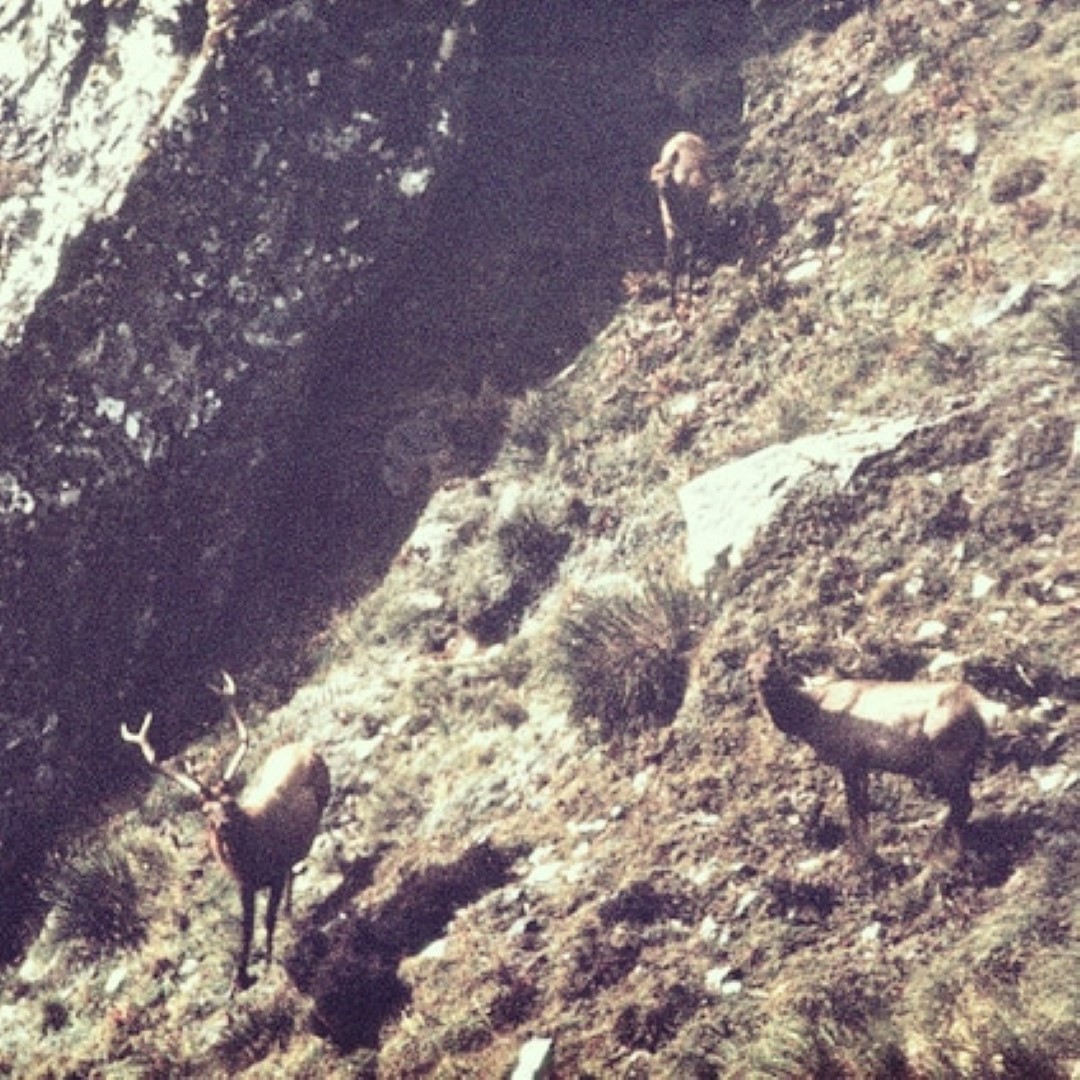
Owing to significant money in farmed deer, a number of Wapiti were caught and farmed on government land near Te Anau, recognised as the “Crown Wapiti Herd”. When financial returns from the operation declined, the herd passed to a hunter group, which was eventually forced to agree not to re-introduce the animals to Fiordland despite the original plan. In 1987, the government decided the Crown Wapiti Herd should never be returned to the wild. In 2021, that decision is still regarded by many as an unforgivable betrayal of the original agreement. The Fiordland Wapiti Foundation currently farms a herd of about 80 wapiti near Te Anau, which may be the only original descended purebred animals left in New Zealand. The battle of Fiordland Wapiti continues with a balance trying to be kept between hunters, Government and other animal interest groups.
Although no official records exist of Elk having been purposefully distributed in to the wild within Australia, reports of several Wapiti type animals having been taken in various States, do pop up from time to time, most likely recent ex farm stock escapees.
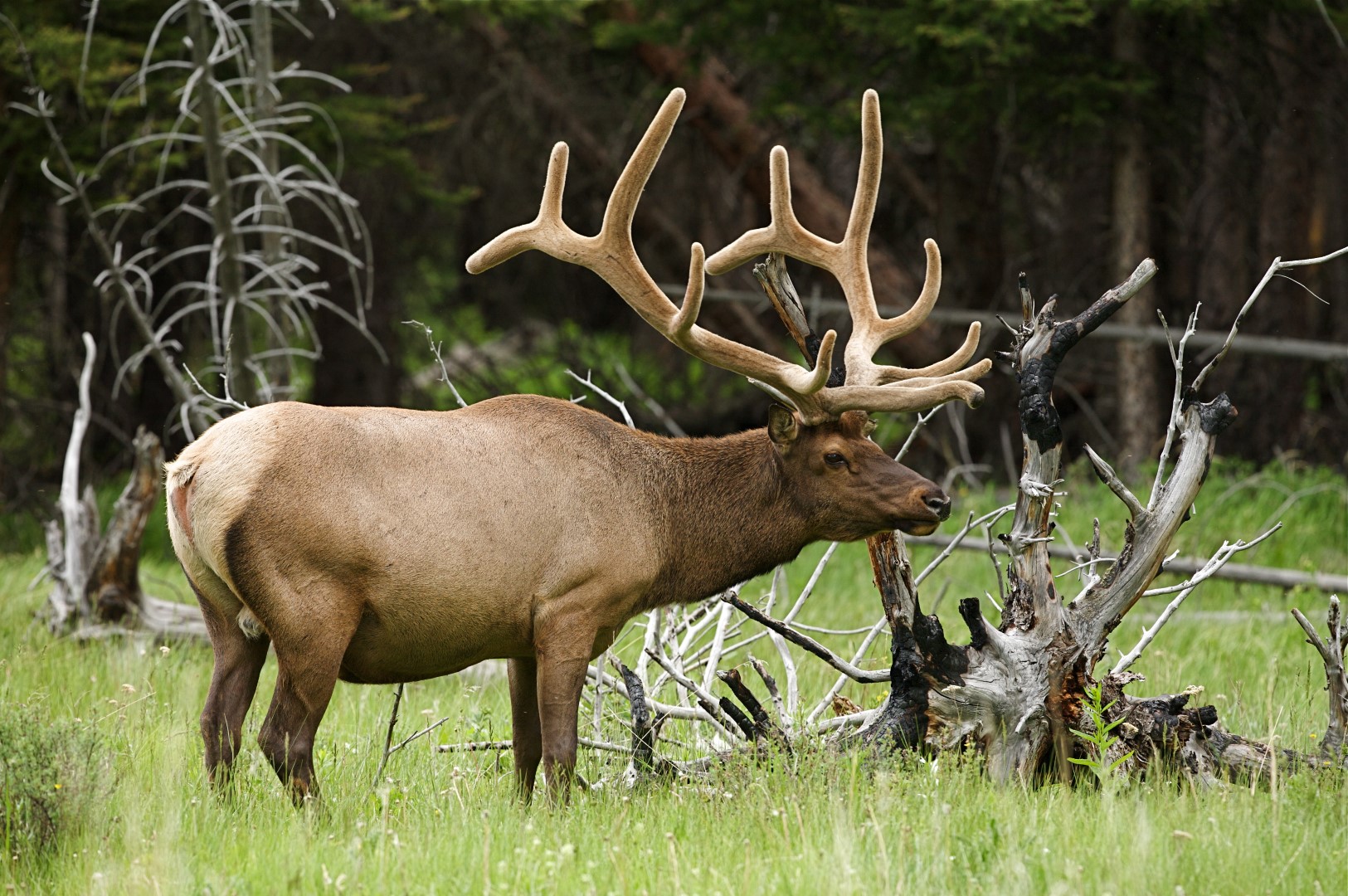
Arthur Bentley reports in his “An Introduction to the Deer of Australia”, “Over the years there have been at least three accounts of Wapiti or what some hunters claimed to be Wapiti, being sighted or shot in Victoria. One persistent claim supported by a mounted head on public display was thoroughly investigated but the claim to it being of Victorian origin could not be substantiated”. This short passage from the 1967(revised 1978) publication supports a prevalent theme of reports since and with the various State Government regulators lack of enthusiasm for Wild deer and a fixation on search and destroy, if there was to be a pocket of Wapiti living in the wild within Australia, I trust it would be closely guarded by a select few.
Hunting opportunities for Elk are numerous across North America and limited within their range in Fiordland.
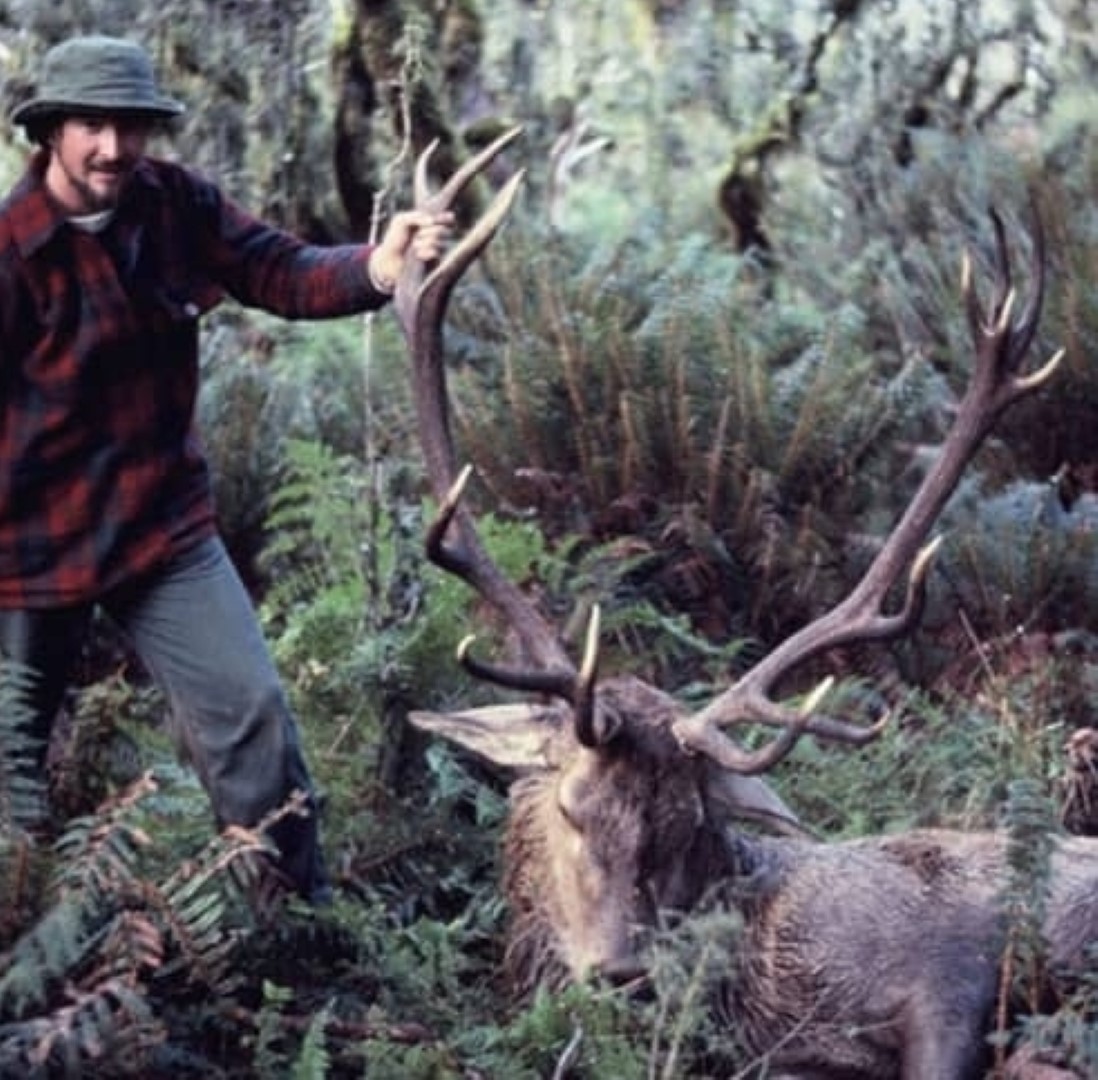
Tags are available via a heavily regulated draw system in The United States or over the counter opportunities are available for those that are keen enough to do their homework and the legwork. Building points in the United States for trophy class hunts is viable for Australian & New Zealand hunters with above average tags for opportunities at trophy class animals which can be secured with a few years point building investment although the rut generally being firearm or bow specific. Canada allows resident hunters a much more liberal opportunity, however, Non-residents require a guide to legally hunt and an allocation of a tag. Trophy quality is often above average and provides an opportunity to hunt with bow or rifle during peak rut times as well as allowing the hunting of additional animals such as Bear or Moose. The Fiordland Wapiti are accessible during the rut by ballot only, although keen hunters can access the “blocks” outside of this time without a winning ballot and test their will against the notorious Fiordland landscape and weather. For the purest trophy hunter, a thorough understanding is needed that the “Elk” within Fiordland are of Red deer influence and therefore trophy potential is not what it is in North America although an animal steeped in such history is worthy of sharing time on the mountain pursuing.